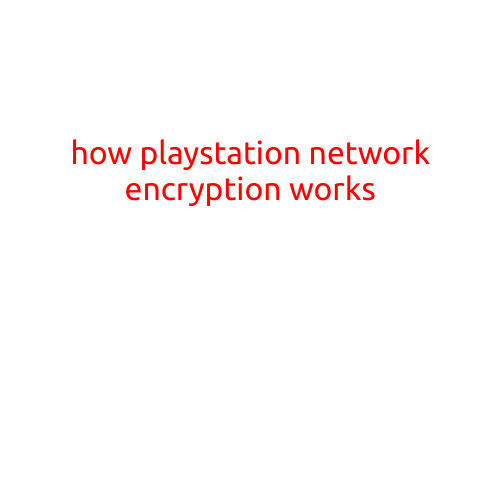
How PlayStation Network Encryption Works
The PlayStation Network (PSN) is a vast online community that connects millions of gamers worldwide. As with any online service, security is top priority to ensure the protection of user data and prevent unauthorized access. One of the key measures in place to achieve this is encryption, which is a crucial component of the PSN’s security infrastructure. In this article, we’ll delve into the world of encryption and explore how it works on the PlayStation Network.
What is Encryption?
Encryption is the process of converting plaintext data into unreadable ciphertext to prevent unauthorized access. It’s a fundamental concept in computer security, used to protect sensitive information such as personal data, financial transactions, and communication streams.
How Does Encryption Work on PSN?
When you initiate a connection on the PSN, your device (console, PC, or mobile) establishes a secure communication channel with the PSN servers using a combination of encryption protocols. Here’s a simplified overview of the process:
- Key Exchange: During the initial connection, the PSN and your device perform a key exchange, where they negotiate a shared secret key. This key is used to encrypt and decrypt data transmitted between the two parties.
- Symmetric Encryption: The shared secret key is then used to encrypt the data using a symmetric encryption algorithm, such as Advanced Encryption Standard (AES). This ensures that only authorized parties with the correct key can access the encrypted data.
- Certificate Authentication: To authenticate the PSN servers, your device verifies the servers’ digital certificate, which contains their public key and other identifying information. This ensures that the servers can be trusted to maintain the confidentiality and integrity of the communication.
- SSL/TLS Encryption: The encrypted data is then wrapped in Secure Sockets Layer (SSL) or Transport Layer Security (TLS), additional encryption protocols that provide an extra layer of security for transmitting data over the internet.
- Authentication and Authorization: Once the connection is established, the PSN authenticates and authorizes your device using your login credentials, such as username and password.
Encryption Protocols Used on PSN
The PSN employs various encryption protocols to protect user data, including:
- AES-256: A widely used symmetric encryption algorithm that provides robust encryption for sensitive data.
- RSA: An asymmetric encryption algorithm that enables secure key exchange and digital signature verification.
- SSL/TLS: Protocols that provide secure, end-to-end encryption for data transmission over the internet.
Benefits of Encryption on PSN
The PSN’s implementation of encryption provides several benefits, including:
- Data Confidentiality: Encrypting data ensures that only authorized parties can access sensitive information, such as login credentials and game data.
- Data Integrity: Encryption helps maintain the integrity of data by preventing tampering and modification.
- Authentication and Authorization: Encryption enables the PSN to verify the authenticity of user identities and ensure access to authorized content.
Conclusion
The PlayStation Network’s encryption infrastructure plays a crucial role in protecting user data and ensuring the security of online gaming. By understanding how encryption works on the PSN, you can appreciate the measures taken to safeguard your online gaming experience. The next time you log into your PSN account, remember the complex encryption processes happening behind the scenes to keep your data safe and secure.





